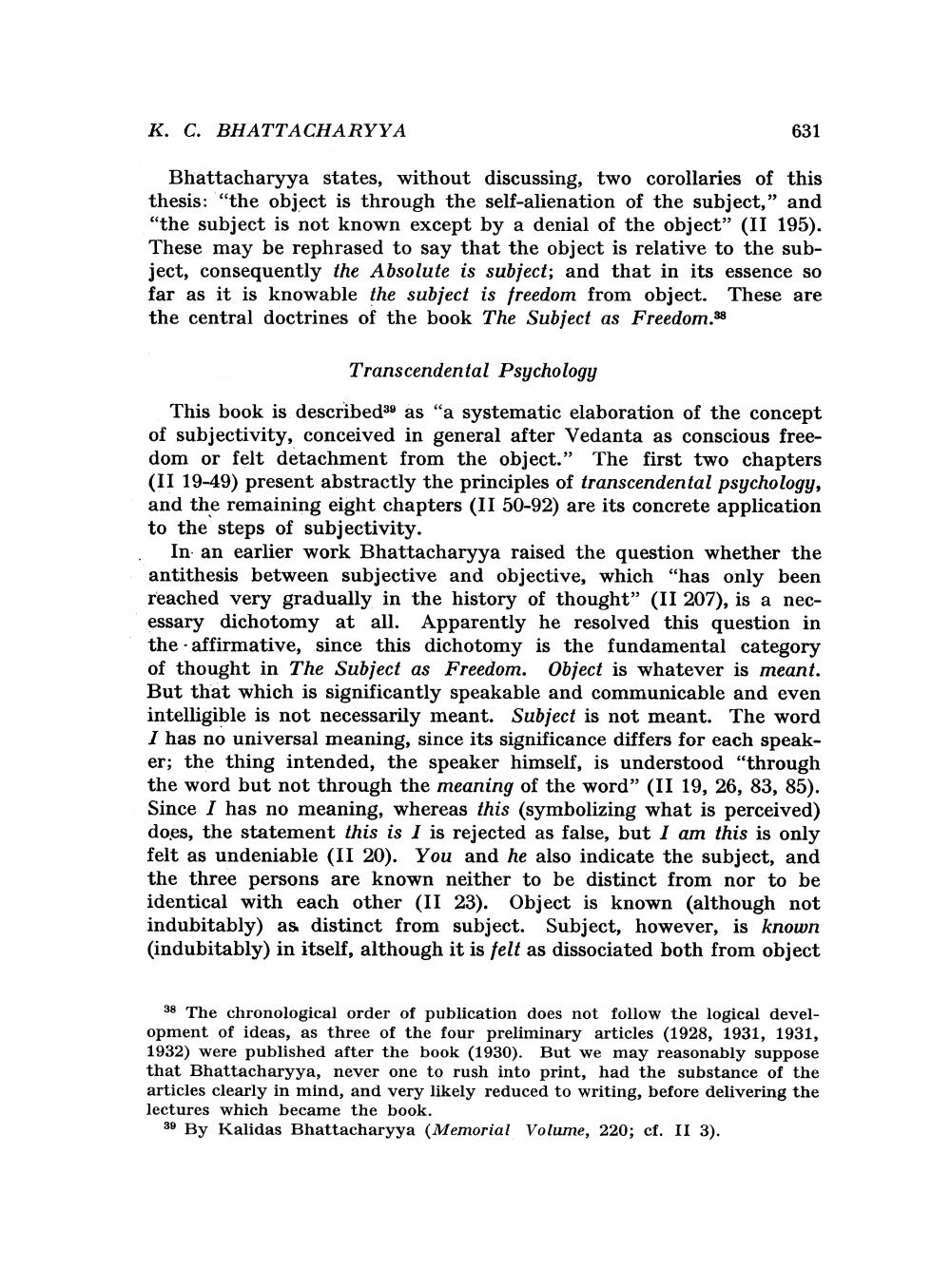________________
K. C. BHATTACHARYYA
631
Bhattacharyya states, without discussing, two corollaries of this thesis: "the object is through the self-alienation of the subject," and "the subject is not known except by a denial of the object" (II 195). These may be rephrased to say that the object is relative to the subject, consequently the Absolute is subject; and that in its essence so far as it is knowable the subject is freedom from object. These are the central doctrines of the book The Subject as Freedom.38
Transcendental Psychology This book is described 39 as "a systematic elaboration of the concept of subjectivity, conceived in general after Vedanta as conscious freedom or felt detachment from the object." The first two chapters (II 19-49) present abstractly the principles of transcendental psychology, and the remaining eight chapters (II 50-92) are its concrete application to the steps of subjectivity.
In an earlier work Bhattacharyya raised the question whether the antithesis between subjective and objective, which "has only been reached very gradually in the history of thought” (II 207), is a necessary dichotomy at all. Apparently he resolved this question in the affirmative, since this dichotomy is the fundamental category of thought in The Subject as Freedom. Object is whatever is meant. But that which is significantly speakable and communicable and even intelligible is not necessarily meant. Subject is not meant. The word I has no universal meaning, since its significance differs for each speaker; the thing intended, the speaker himself, is understood "through the word but not through the meaning of the word” (II 19, 26, 83, 85). Since I has no meaning, whereas this (symbolizing what is perceived) does, the statement this is I is rejected as false, but I am this is only felt as undeniable (II 20). You and he also indicate the subject, and the three persons are known neither to be distinct from nor to be identical with each other (II 23). Object is known (although not indubitably) as distinct from subject. Subject, however, is known (indubitably) in itself, although it is felt as dissociated both from object
38 The chronological order of publication does not follow the logical development of ideas, as three of the four preliminary articles (1928, 1931, 1931, 1932) were published after the book (1930). But we may reasonably suppose that Bhattacharyya, never one to rush into print, had the substance of the articles clearly in mind, and very likely reduced to writing, before delivering the lectures which became the book.
39 By Kalidas Bhattacharyya (Memorial Volume, 220; cf. II 3).




